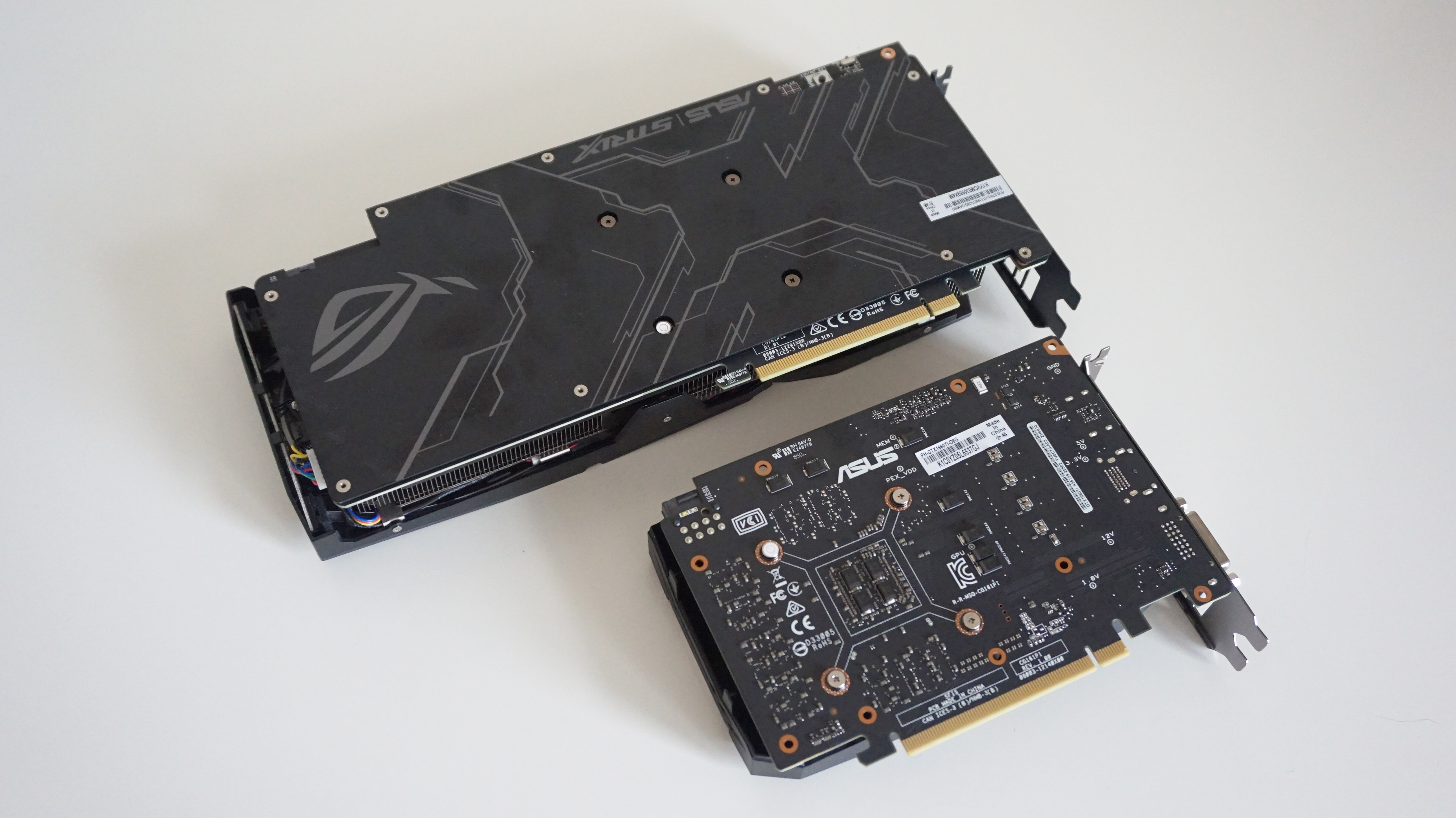
Let’s get this out of the best way now. The GTX 1660 Ti is a horrible, horrible title. It’s confusingly just like Nvidia’s current GTX 1060, implying it’s some kind of bizarre, midway home between that and the GTX 1070, when the truth is it’s really a part of Nvidia’s new Turing household, which is identical GPU inside their new RTX 20-series playing cards, making it, in impact, rather more intently associated to the RTX 2060 than the rest. It’s a large number, actually, and isn’t helped by Nvidia’s considerably weak justification for beginning a brand new 16-series is as a result of 16 is nearer to 20 than 10 (critically).
But! Naming conventions apart, the GTX 1660 Ti is definitely a reasonably swish graphics card – and probably even a best graphics card contender for these after prime notch high quality at 1920×1080. Priced from £260 / $279, that’s £70 / $70 lower than the most cost effective RTX 2060, and rather more in step with what the GTX 1060 initially price all these years in the past earlier than graphics card costs went a bit crazy. And but this little tiddler (or not so tiddly within the case of Asus’ ROG Strix OC version on the left up prime there) isn’t simply extra highly effective than the GTX 1060. It’s additionally even nippier than the GTX 1070, and in plenty of instances even brushing up in opposition to the RTX 2060. Which ain’t unhealthy for a card beneath £300 / $300.
Of course, plenty of you could be questioning, why not simply name this factor the RTX 2050 and have performed with it? There’s good cause for this, and that’s as a result of the GTX 1660 Ti’s Turing GPU doesn’t even have any of the RTX stuff that makes the RTX playing cards RTX. Stuff like RT Cores for real-time ray tracing, or Tensor Cores for Nvidia’s efficiency boosting DLSS tech. None of that’s right here for the GTX 1660 Ti, therefore why it’s been dubbed a GTX card as a substitute of an RTX one.

The GTX 1660 Ti will are available in all types of sizes and shapes, making it an amazing match for mini ITX instances in addition to common ATX PCs.
What it does have, nonetheless, is Turing’s fancy pants shaders, permitting for different efficiency enhancing strategies resembling variable fee shading, movement adaptive shading and content material adaptive shading. Similar to DLSS, these use Turing’s AI smarts to take a number of the load off the GPU by figuring out which bits of a scene don’t want as a lot rendering (or colouring in, so to talk) as different bits, permitting the GPU to deal with what does want filling in, resembling detail-heavy management panels for instance, as a substitute of placing numerous wasted effort into rendering less complicated objects resembling clean partitions.
You can learn extra about the way it all works in my Nvidia RTX information, however from my very own expertise of it in Wolfenstein II, there’s barely any loss in total visible high quality, and also you get a body fee increase of round 15-20fps within the course of. Not that Wolfenstein II is especially exhausting to run within the first place, thoughts, however nonetheless, if it’s indicative of the form of increase you’ll see in different games, it definitely sounds promising certainly. The downside is that, like a lot of the new options ushered in on Nvidia’s RTX playing cards, it wants particular developer implementation and isn’t simply out there by default, leaving us with little or no to really check. In reality, proper now Wolfenstein II is the one game that helps it proper now, however Nvidia have assured me that extra will comply with. At some level.
Still, I’d argue this isn’t such a giant deal for the GTX 1660 Ti, as the cardboard’s glorious uncooked efficiency and relatively low worth are what actually make it such a gorgeous proposition over Nvidia’s present 10-series.

Not all GTX 1660 Ti playing cards could have the identical configuration of show outputs. The Asus Phoenix (prime) comes with a DVI output, for instance, whereas their ROG Strix OC version (under) swaps it for a second DisplayPort.
Right now, for instance, Nvidia’s £200 / $250 6GB GTX 1060 and AMD’s £185 / $200 8GB Radeon RX 580 are at the moment my prime graphics card suggestions for taking part in games on max settings at 1080p – and till the RTX 2060 got here alongside, had been additionally what I prompt shopping for for 1440p gaming offered you didn’t thoughts making just a few compromises within the graphics division.
However, as a few of right now’s extra demanding blockbuster games have proven (*cough*Metro Exodus and Assassin’s Creed Odyssey*cough*), each of those playing cards are beginning to lose their edge as flawless 60fps 1080p graphics playing cards. AMD have already launched their £235 / $260 Radeon RX 590 to attempt to rectify that efficiency hole, however Nvidia’s GTX 1660 Ti tops the lot of them, providing just about 60fps minimal on the easiest settings at 1080p (save Metro Exodus) and a good 60fps on High settings at 1440p.
Now, there’s no Nvidia Founders Edition of the GTX 1660 Ti this time spherical, so I’ve been despatched £330 (US pricing TBC) Asus’ ROG Strix OC version in addition to their entry-level £260 / $279 Phoenix card to evaluate. I haven’t had fairly as a lot time with the latter, however my checks present that it’s actually solely a median of 2-5fps slower than the ROG Strix OC, so I’m fairly assured you may take the ROG Strix OC outcomes I’ll be outlining under and apply them comparatively safely to what you’ll get on the cheaper £260 playing cards as properly.
After all, each playing cards include the identical 6GB of GDDR6 reminiscence and 1536 CUDA cores, and so they every share the identical base clock velocity of 1500MHz. The solely actual distinction when it comes to their total specs is their increase clock velocity, which matches as excessive as 1890MHz on the ROG Strix OC when its OC mode is engaged (though I left it on its default Gaming mode for testing, which caps it at 1860MHz), and 1815MHz on the Phoenix (once more, whenever you’re utilizing its OC mode – in any other case you’re a most of 1785MHz).

Asus could have 4 GTX 1660 Ti fashions in whole, with the Phoenix (above) sitting on the most cost-effective finish of the spectrum.
So let’s discuss numbers. In Shadow of the Tomb Raider, for instance, the GTX 1660 Ti was in a position to ship no less than 59fps on its Highest graphics settings in each its powerful Cozumel cave and Cozumel city sq. scenes at 1920×1080, rising to 80fps within the former and 67fps within the latter – and that’s with its prime SMAA x4 anti-aliasing setting enabled as well. That’s virtually double the velocity of the GTX 1060, whose vary of 28-42fps on these settings was solely nearly playable once I examined it in the identical PC. It’s additionally noticeably sooner than each the RX 590 (37-61fps) and GTX 1070 (40-60fps), and solely a teensy bit behind the RTX 2060, which got here in at 65-82fps.
I used to be additionally impressed with the way it dealt with Total War: Warhammer II, averaging 60fps on Ultra at 1080p and 59fps on High at 1440p. That’s a very good 15fps in entrance of the GTX 1060 and RX 590 at 1080p, and just about on par with the GTX 1070 as properly. The hole isn’t fairly so pronounced at 1440p, all instructed, however with the RX 590 down within the low 40s and the GTX 1060 and 1070 within the low 50s on High at this decision, the GTX 1660 Ti presents simply that further little bit of surety in the case of getting up shut and probably judderingly private with the tip of a Lizardman’s battle spear.
High was additionally the place it was most snug working Monster Hunter: World at 1440p, too, averaging a really agreeable 58fps when out within the wilds of dino territory, and providing nigh-on similar speeds to my 1080 Highest outcomes as properly. To put that in context, the GTX 1060 can barely scrape 40fps on both of these settings, whereas the RX 590 continues to be lagging behind within the low 50s at 1080p and excessive 40s at 1440p. Even the GTX 1070 can solely handle a median of round 56fps on these settings, which makes the GTX 1660 Ti’s outcomes much more engaging.

As you’d anticipate, Asus’ ROG Strix OC card comes with a fancier again plate and RGB Aura Sync lighting.
The similar could possibly be stated of Assassin’s Creed Odyssey, too, the place I noticed an virtually excellent 56fps common on Ultra High at 1080p, and a really commendable 61fps at 1440p on common High. The GTX 1060, alternatively, solely mustered 34fps utilizing the previous settings, and a fair wheezier 31fps on the latter. The RX 590 isn’t a lot better on this entrance, both, hitting simply 37fps / 35fps apiece, whereas the GTX 1070 solely managed 48fps / 54fps. Instead, you need to look to the RTX 2060 earlier than you begin seeing near-60fps speeds on these settings (60fps / 65fps, to be exact), which as soon as once more reinforces the GTX 1660 Ti’s strengths as a sub £300 / $300 graphics card.
In much less demanding games, the GTX 1660 Ti can also be well-positioned as a wonderful accomplice for prime refresh fee screens as properly, hitting properly over 100fps in Doom at each 1080p and 1440p on Ultra settings, with highs of 180fps / 190fps. The GTX 1060 and RX 590, in the meantime, typically reached their restrict across the 120fps mark at 1080p and simply 90fps at 1440p. You’re nonetheless over 60fps as a baseline for these playing cards, however neither can attain the identical dizzying heights because the GTX 1660 Ti.
It was an identical image over in Forza Horizon 4, too, the place the GTX 1660 Ti managed a median of 100fps on Ultra at 1080p and 78fps on Ultra at 1440p. Admittedly, the RX 590 wasn’t too far behind right here with its averages of 93fps and 73fps at these settings, however it’s nonetheless a very good 33-39% sooner than the GTX 1060’s averages of 72fps and 57fps, and even roughly neck-and-neck with the RTX 2060’s 98fps and 80fps averages.
- Regardless of mannequin, all GTX 1660 Ti playing cards require an 8-pin energy connector.
There will nonetheless be some games that problem the GTX 1660 Ti, after all, resembling Final Fantasy XV and Metro Exodus. In the previous, you’re Average settings at 1080p if you need near-60fps speeds with all of Nvidia’s fancy results switched on, however Highest with all of that switched off will nonetheless internet you a clean 60-72fps, which is roughly the identical as what I managed on the RTX 2060. The RTX 2060 nonetheless has the sting whenever you transfer as much as 1440p, however the GTX 1660 Ti will nonetheless bag you a really playable 46-52fps on High sans Nvidia results, or 56-62fps on Average, each of that are a very good 10-15fps increased than what you’ll get on the GTX 1060 and RX 590.
As for Metro Exodus, I noticed a median of 54fps on High settings at 1080p in its benchmarking instrument, and an admirable 53fps common on Medium at 1440p, placing the GTX 1660 Ti round 10fps in entrance of its cheaper competitors, and bang on par with the GTX 1070. The RTX 2060 will nonetheless get you one other 10fps on prime of that, thoughts, however for a GPU beneath £300 / $300, these are nonetheless some fairly spectacular outcomes regardless.
Indeed, with so lots of my check outcomes clutching on the RTX 2060’s coat-tails, it virtually makes you wonder if it’s actually value spending the additional £70 / $70 for all that ray tracing and DLSS assist. I’d argue ‘yes’ in the event you undoubtedly need the quickest speeds on the very best settings at 1440p, or have a 1920×1080 monitor with a excessive refresh fee. If you’ve solely acquired a 60Hz, 1920×1080 monitor and are completely proud of enjoying games at 60fps on High settings at 1440p, nonetheless, then I reckon the GTX 1660 Ti will do you simply effective – particularly in the event you’re of a thoughts to attend till ray tracing and DLSS grow to be extra widespread earlier than making the bounce to a full-blown RTX card.
As for whether or not you must select the GTX 1660 Ti over Nvidia’s GTX 1060 or AMD’s RX 590, that every one is dependent upon the place you reside for the time being. If you’re within the US, the GTX 1660 Ti is an absolute no-brainer, being simply $20 greater than the most cost effective 6GB GTX 1060 I might discover at time of writing and $10 greater than the RX 590. Regardless of whether or not you’re 1080p or 1440p play, the GTX 1660 Ti has each of those playing cards crushed fingers down, making it my new prime advice for best graphics card at 1080p, and what you must really purchase for 1440p in the event you don’t care about ray tracing or DLSS.
For these within the UK, nonetheless, I reckon the £200 6GB GTX 1060 and £235 8GB RX 590 are nonetheless each low-cost sufficient at time of writing (particularly when you throw AMD’s current three free games bundle into the combination) to make them tempting finances playing cards for many who aren’t so fussy about enjoying games at 60fps on max settings. And then there’s that mad AMD Radeon RX Vega 56 deal for £250 introduced yesterday which simply blows every thing out of the water – each from a efficiency standpoint and the very fact you get three free games with it, too. The Vega 56 deal could not final, after all, however the level nonetheless stands that there’s much more to contemplate right here than our mates within the US.
Still, one factor is obvious. No one needs to be shopping for a GTX 1070, no matter the place you reside. With the GTX 1660 Ti providing just about similar speeds for lots much less cash, and the RTX 2060 surpassing it even additional for roughly the identical form of cash, that card is now lifeless and buried.
Instead, the GTX 1660 Ti is now my new 1080p graphics card of selection for many who need absolutely the bestest finest speeds, in addition to my new finances advice for anybody searching for a good 1440p card and doesn’t need to spend greater than £300 / $300 on it. The RX 590 might be nonetheless higher worth total within the UK, however elsewhere the GTX 1660 Ti makes a really compelling case certainly. If you’re at the moment within the throes of upgrading your graphics card, the GTX 1660 Ti comes extremely beneficial.





